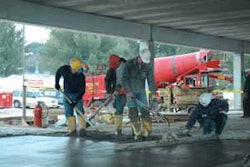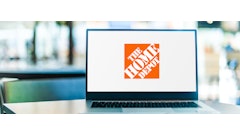According to the National Equipment Register, the value of stolen equipment has risen 20% each year since 1996. Some surveys suggest the total figure for stolen heavy construction and agricultural equipment is as high as $1 billion in annual losses and indirect costs. Even more alarming — only 10% to 15% of stolen equipment is ever recovered.
"Professional thieves view construction theft as a highly lucrative business opportunity and we see this problem increasing year after year," says Richard T. Riley, president and COO of LoJack Corp. "As lucrative as theft is for the thieves, it is doubly costly for the victims. Construction companies not only have to pay to replace their equipment, they also lose valuable revenue because of business downtime."
Although insurance may offset some of the financial burden, there are other costs paid directly out of pocket. According to Construction Equipment Security, a report produced by the Florida Partnership for Safety and Health, such costs include insurance deductibles, replacing depreciated items with new equipment, production delays, paperwork and time in reporting and replacing the equipment. In some cases, the total costs of theft can mean the difference between profit and loss on a project.
The good new is that the theft recovery rate is also on the rise. LoJack's fourth annual Construction Equipment Theft Report shows more than $12.8 million in stolen construction equipment assets were tracked and recovered by LoJack last year, up 42% from 2003.
Theft recovery systems can be an effective means to stop thieves in their tracks. But there are other steps you can take to minimize the risk of theft in the first place, as well as increase the chance of recovering equipment if a theft occurs.
- Develop a plan and program for theft prevention. Prior to starting a project, identify the necessary steps to effectively secure the site. Establish theft prevention policies and communicate these policies to all workers. Hold supervisors and workers accountable for their part in controlling losses.
- Maintain records. Develop a list of equipment serial or product identification numbers. If possible, maintain color photos and notes with other identifying information.
- Make your equipment easy to find. Stamp an ID number onto equipment and tools in both an obvious and a hidden area. Consider painting the equipment in unique or easily identifiable colors. Include your corporate logo.
- Immobilize or make equipment difficult to move during non-working hours. This can include clustering equipment in a circle, using mechanical locks or utilizing electronic devices to prevent starting.
- Register your equipment. Provide a list of ID numbers to the local police department, area theft prevention organizations and/or a national registry service.
- Consider theft recovery or GPS-based equipment tracking systems. The cost of incorporating such systems into your fleet can often be recovered by preventing even a single theft.
Taking steps to minimize your theft risk just makes good business sense. Doing so can often help to reduce your insurance costs, and may enable you to avoid what can quickly turn into a profit-breaking loss.


















